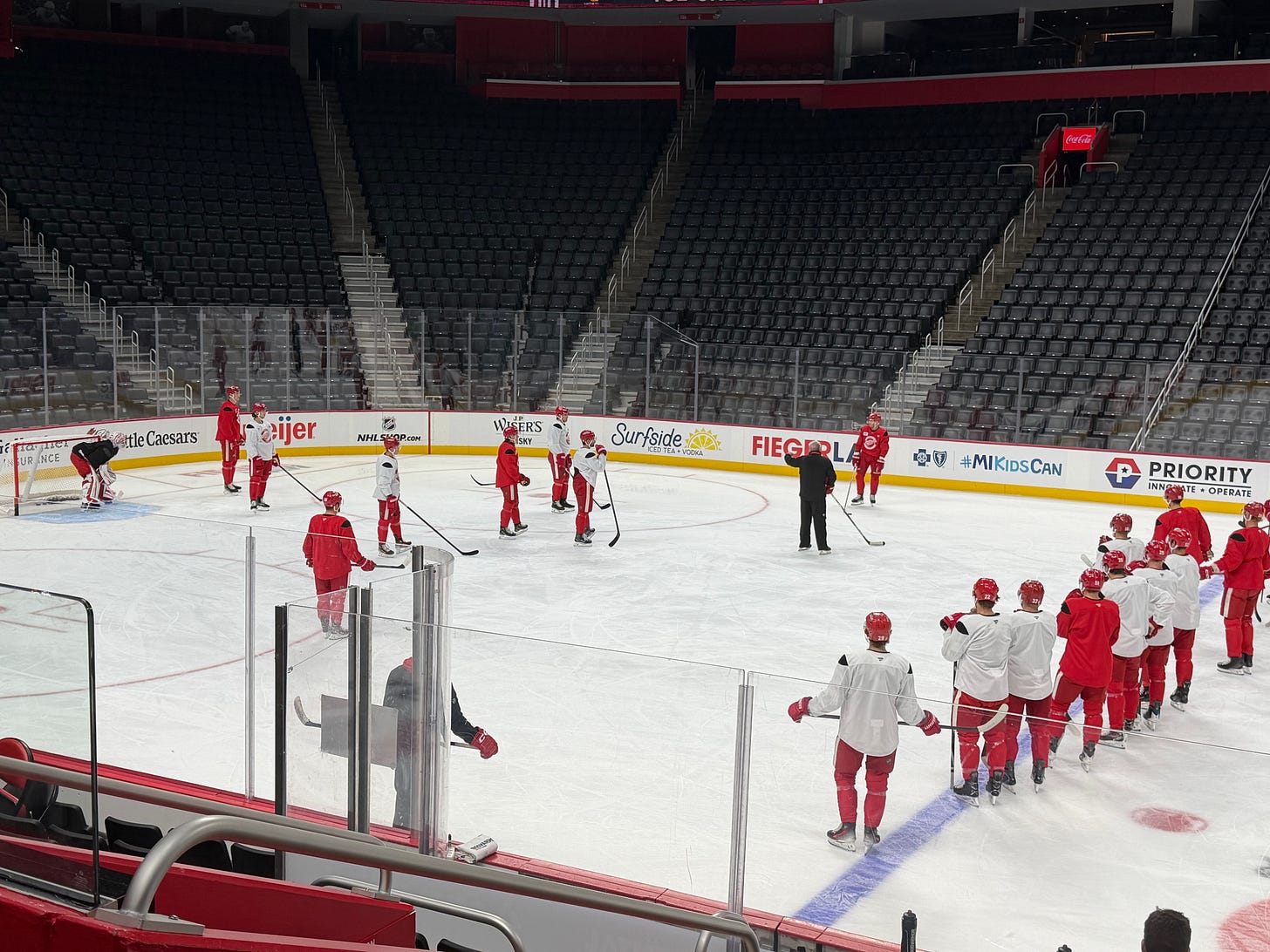Why stopping to teach on the fly matters in NHL training camps
Let's take a look at how things have shaped up in Detroit with Todd McLellan.
One of the things I’ve always found interesting about coaching is how certain individuals go about setting and painting a tone coming out of training camp.
And I’m not talking about what players say on the record or how it’s presented in traditional media, because, frankly, right now 32 NHL teams are in the midst of the “best” or “hardest” or “most challenging” training camp they’ve ever gone through.
Just like everyone, right now, is in the “best shape of their life,” which is always a remarkable coincidence that at least 80 percent of the league can make that claim at some point before opening night.
So I’ve been curious this week closely watching how Red Wings coach Todd McLellan runs his practices, how he manages individuals, and creating a bit of a new base level, in my mind, after watching Detroit practice last season after McLellan took over on Dec. 26 for Derek Lalonde.
Because when a coach enters a new situation midseason, like McLellan did, it’s easy to see differences. The “play fucking hockey,” comment really delighted many Red Wings fans, but it was also kind of something that McLellan had to say after Lalonde’s lack of fire was one of the reasons he lost his job.
So this training camp has been a chance to see McLellan from the start, not having to build on top of what a prior coach left him in the middle of the season.
And for both myself, and the Red Wings players I’ve spoken to, there’s been a pretty noticeable difference between this September and September of 2024 because McLellan is a more vocal and forceful teacher than past coaches in Detroit.
McLellan tends to stop drills as he sees a mistake, then often explaining why he stopped it and correcting to the entire group. In the past, there was more of a free-flowing nature in Detroit’s practices, the drill would run all the way through, then the coaches would give their feedback at the end.
This worked for some players, in fact some in the past liked the way Lalonde let them play through and solve their own problems, while others have been more comfortable with McLellan’s approach.
Albert Johannson, for example, told me today that he feels he has a better understanding of where exactly he needs to be in certain situations with McLellan’s system. That the in-drill stoppages help reinforce what was actually shown on the whiteboard before.
Another younger player, Marco Kasper, told me McLellan’s approach also allows for some back-and-forth and better understanding, that while the coach is teaching, he’s also open to feedback and questions in those moments.
We saw a moment like that earlier this week, on Tuesday, where the Red Wings were working on the penalty kill, and Lucas Raymond and McLellan had a conversation back-and-forth about how to properly play the gap and when, and when not, to give the shot to the player on the flank.
McLellan compared it to parenting, he and his wife have two sons, and how a coach has to understand the different personalities of each individual, but also find ways to teach in the moment.
“You know, when I watch my boys, and if I catch them doing something right I better pay attention to it. I better acknowledge it, that I’m satisfied, or my wife and I are happy with what just happened, because then they’ll do it again,” McLellan said. “And if we catch them misbehaving, or doing something that we’re not happy with, we also have to acknowledge that.”
It’s funny, I have a 7-year-old and 4-year-old, and somehow fixing one of the NHL’s worst penalty kills requires similar skills to getting my 4-year-old to walk into school without too much of a hassle.
The other thing about McLellan’s approach, which multiple players appreciated, is how often the Red Wings have scrimmaged or done game-like scenarios throughout camp on top of the stop-and-start nature of in-drill teaching.
“That’s always been Todd, or at least that was him when I played for him before,” Red Wings goalie Cam Talbot said. “You kind of get the feeling guys understand that part of the teaching, the building blocks need to be put in place, and then they get to use them in those game situations later.”



Good coaches never stop teaching!